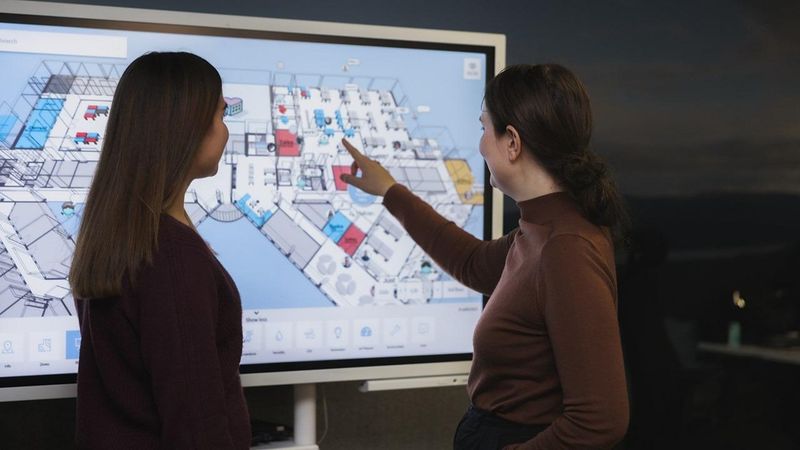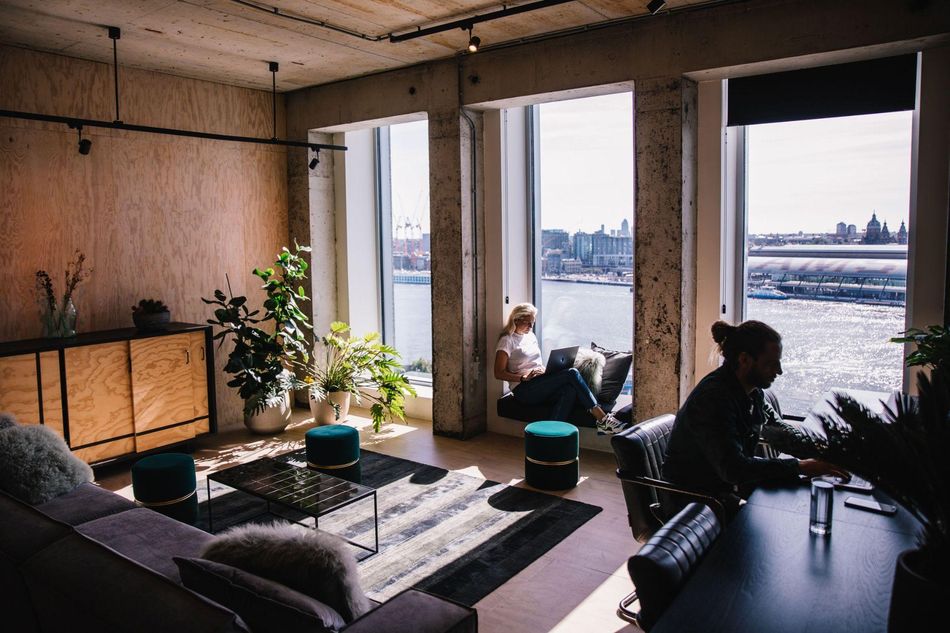Bringing the Smart Home to the Smart Office: How engineers can empower users with IoT-enabled products in the workplace
Article #3 Electronics Innovation Series. As offices re-open the must embrace the use of data at a smart home scale.
This is the third article of a 6-part series looking at innovation in the electronics industry.
The effects of the COVID-19 pandemic brought many changes to the way we live, not least of which to the way we work. While we’re all familiar with the shift to remote and hybrid work, the office continues to be the most important place for organizations to meet, collaborate, and get work done. And as employees return to the workplace, they’re expecting a different experience of their working environment: the smart office.
During the pandemic, many workers got used to remote work and working-from-home, with recent research from Slack’s Future Forum finding that 78% of workers continue to have the flexibility to work where they want to. However, for many companies, the experiment in remote work is coming to an end, with a Microsoft survey finding that 50% of companies want workers back in the office 5 days a week. Yet with a tight labor market and low unemployment, employers are finding they need to accommodate workers’ demands and a new model of hybrid work is arising, supporting employees working both on-site and remotely.
Bringing Employees Back to a New Era of the Workplace
For organizations who want employees back in the office, the office as it was isn’t good enough. While employees were getting used to the comforts of working from home, they were also evolving what those comforts include. The pandemic’s stay-at-home and work-from-home lifestyle gave people a reason to try out new smart home tech – sparking a boom in the adoption of IoT-enabled smart home devices. Research firm IDC reports that the smart home market grew by 11.7 percent in 2021, and that ”consumers have shifted their spending priorities from other areas like vacations and going out to eat to focus on adding more comfort, conveniences, and entertainment at home.”
Consumers have come to enjoy smart home devices for use cases such as smart lighting, smart thermostat control systems, home security, ambient air quality, water conservation, and many more, with multi-device platforms serving as a hub to connect and coordinate devices and have 360 degree view into the data they capture. Increasingly, users expect to use their phones as a means to customize more than just their experience of information and entertainment, but of the environment around them.
Empower Users with the Next-Generation Smart Office
As employees become accustomed to the features and benefits of smart home products, they increasingly want the same level of access and control these products provide while in the office.
A smart office is a technology-optimized space designed to improve the experience of employees, allowing them to work smarter, better, and more efficiently. Just as smart homes improve comfort, convenience, and efficiency with connected devices, the smart office uses connected equipment to bring these benefits to the workplace – providing a whole host of benefits for both employees and businesses alike.
At the core of the smart office concept is a range of Internet of Things (IoT) devices, particularly sensors and edge devices which gather data about the environment. This data is then connected to a centralized system, which can display it to users and allow them to make changes. Sensor data can also be connected to analytics tools in order to find meaningful patterns for improving facilities management, or even connected to action-based automated workflows.
For users of the smart office (your employees or other visitors), being able to provide feedback and request changes on the environment is key. Most notably this involves temperature and humidity (Is it too hot? Too cold?), but can also include reserving conference rooms, finding a desk or workspace that meets their needs, or even receiving new supplies. Touch sensors can trigger pre-set events ranging from a request for services to documenting maintenance activities. These requests can go through facilities management to implement, but can also be displayed publicly on a smart screen in the building, or through a smart building app.
One notable example of this is in action the A’DAM Toren in Amsterdam. A landmark multi-use development, the tower includes a hotel, restaurants, and nightclubs, as well as coworking space and private office space, with tenants such as Sony Music. Tenants are given access to an app for the facility which allows them to see the occupancy and temperature of rooms, book spaces, and leave requests for the facilities team – giving a new dimension of empowerment to the building’s occupants. Whereas mobile apps such as Uber allow our phones to provide us with transportation on-demand, a building app in conjunction with IoT smart office technology can give users a customizable experience of the space in which they work.
Implementing Smart Office Functionality: Key Features
Implementing a smart office in your building will require utilizing a range of IoT sensors to detect various data points, which can then be relayed to the cloud via Ethernet or a cellular network. This data can then be integrated into a custom-built application via API or an out-of-the-box solution from a provider.
Smart climate control and environmental sensors: With smart climate control, you can ensure your workplace is as comfortable as possible for employees. There are numerous options here: Smart HVAC systems detect usage patterns and automatically regulate temperature, increasing the system’s efficiency. However, with IoT devices you can give control to your employees, allowing them to make temperature adjustment requests from an app. To institute this, you need ambient air temperature sensors which can accurately measure your office’s temperature in given locations. These sensors are usually small, unobtrusive, and don’t require wires.
In addition to temperature, you can deploy a range of other sensor types. Humidity sensors can detect humidity levels, and if they go above set levels, notify the HVAC unit to dehumidify, not only improving employee comfort but preventing the growth of mold, dust mites, and other pests. These humidity sensors can also be placed in critical facilities locations such as server rooms or on pipes to monitor conditions for vital equipment. And while your office likely already uses sensors for carbon monoxide and smoke, additional air quality sensors can monitor the level of other common pollutants, ensuring a safe environment for all inhabitants.
Typically, IoT sensor devices securely communicate their data to a cloud-based system, where it can be forwarded via an API to other applications for further use. These IoT sensor devices can not only improve user comfort and well-being, but improve energy efficiency and extend equipment life.
Smart lighting: One of the more popular smart home features, smart lighting is one of the easier places to start for modernizing the office. According to Gartner, smart lighting has the potential to reduce energy costs by 90 percent.
With smart lighting, IoT devices detect motion in a room and turn lights off or on accordingly, and controls can automatically adjust the lighting levels relative to the level of daylight. When connected to a user-facing app, users can turn lights on or off, control lighting intensity, and adjust lighting color all from their phone.
Space management: With the shift to hybrid work, gone are the days of every employee at the office sitting at the same desk every day. In response, we are seeing the rise of hot-desking and desk hoteling, where employees use different workstations throughout the day, either using on a first-come, first-served basis or booking spaces with defined criteria at defined times using a reservation system. Additionally, smart conference rooms allow users to find and book meeting rooms, and perhaps order additional add-ons such as catering or equipment from the same platform.
To manage this shift, sensors (using one of a range of occupancy, thermal, or visitor counting sensors) combined with a reservation or booking application system are necessary to monitor the usage of office space. Connected to a building app, users can book space either for themselves or for meetings or collaborative work, view the schedule and availability of other spaces, and be notified of cancellations or changes in availability.
Security: Another popular smart home application which can benefit the office are smart security cameras such as Ring or SkyBell. Video monitoring tools can help improve security, while also allowing facilities managers to analyze how office space is being utilized. In addition to video monitoring, your smart office can choose from a variety of systems and solutions for visitor management and access control, such as using a tablet and cloud-based software to record visitor entry and screen visitors, provide visitors a QR code for access and wayfinding tools to ensure guests can navigate to their destination, as well as more sophisticated access control systems utilizing biometric data.
Supply management and fault reporting: Ensuring access to necessary equipment and keeping that equipment in working order is a critical facilities management function, from laptops to A/V equipment to the espresso machine. With a facilities management user app, employees can register faults such as equipment or building issues right from their phone, attaching a picture and description and adding it directly to the FM team’s workflow. Users can also make requests for equipment directly within the app or software solution. Additionally, touch IoT devices can trigger set actions, such as when a certain item needs to be repaired.
Interactivity and user experience: While the execution of the smart office is enabled by IoT devices and other advances in hardware, ensuring your users can easily interact with your smart office system to meet their needs is a critical component. A location-responsive app, giving users the ability to take the actions they need, is a great choice. Also, screens displaying critical information such as space occupancy, current temperature and other environmental conditions, as well as a map of the building, can be helpful for more public and immediate access to information.
Data privacy: When implementing features for your smart office, design with user privacy in mind. If employees feel like they are being watched and monitored every step of the way, your smart office will have the opposite effect. That’s why it’s critical to follow some key principles. Always give control to the end-user and work to empower users. Be transparent about what, why, and how you measure. Anonymize data as much as possible, and clearly define which roles can access which data. Do not observe or control individual users, establish strong internal IT privacy principles, and always comply with any relevant regulations, such as the GDPR.
While these areas provide some key functions for the smart office, some facilities may not require all of them – while others may want to push into other areas. As smart home and office technologies catch on, new ways to improve and connect capabilities will continue to arise. For more ambitious organizations, gamification and employee engagement features can be built into user-facing apps, other features such as colleague tracking can be included, and voice control functionality (such as offered by Alexa for Business) can be implemented. The smartest office is the one that meets the needs of your particular organization – and your users.
OKdo: An Intelligent Supplier for Your Smart Office
The future doesn’t always come easy – implementing an IoT-enabled smart office that meets the needs an organization and its users can be a complex undertaking. To achieve this vision, engineers need an intelligent supplier, one that can help respond to and help solve their unique challenges; ideate, test, and review their solutions; and execute to realize their particular goals and objectives.
OKdo supports engineers with the imagination, creativity, and technical expertise needed to realize their business vision. Okdo assists engineers by delivering a unique combination of software, development support, and manufacturing services to turn their ideas into commercial reality. OKdo goes beyond just supplying to offer innovators a wide range of services, support and expertise in part selection, prototyping, customization, and large-scale manufacturing. Learn more about how they can help you to build and implement your IoT smart office vision OKdo.com
Raul’s thoughts:
“One of my previous bosses used to say that you spend more time at the office than with your family, so we all needed to try to make the work environment like your home. However, after a while, watering the plants, reporting that we had run out of milk or reporting that a light had stopped working became less of a priority than the next deadline or the next meeting. And these small things become a reason to complain and to make the day to day less efficient, less enjoyable and less friendly. Consequently, a smart office can help us to manage all these problems and automatically improve the working environment, leading to an increase in the company’s efficiency.
In my opinion to be able to deliver a reliable, efficient and affordable smart office we need to innovate with:
- Existent, traceable, accurate and affordable sensors to design sensor nodes.
- Existent, reliable and affordable actuators to design actuator nodes.
- Existent, secure and standard radio modules to embed in the sensor and actuator nodes.
- Existent, reliable and affordable computing platforms able to:
- Communicate with the sensor nodes to collect the raw data.
- Transform this data into information through predeterminate algorithms.
- Communicate the information to a cloud system for future analysis.
- Transmit the require action to the actuator node.
In conclusion, the opportunity to create the next smart office platform is reachable to anyone who is willing to put in the time and the effort to try. Here an OKdo we are more than happy to help anyone to have the ability to convert raw environmental data into reliable information to bring the smart office concept into reality.”
This is the third article of a 6-part series:
Article 1 looked at supply chain resilience.
Article 2 examined the future of sustainable electronics.
Article 3 (this article) surveys current smart office trends.



